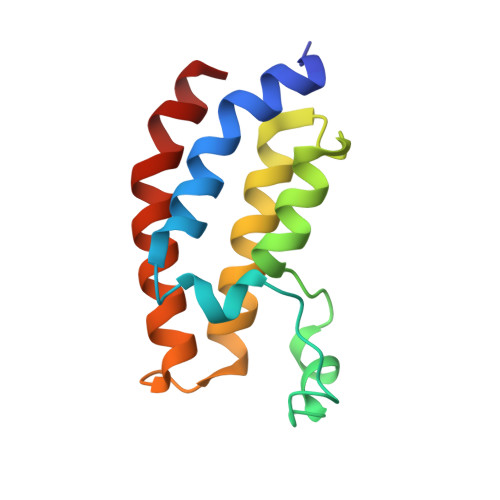Regulatory T Cell Modulation by CBP/EP300 Bromodomain Inhibition.
Ghosh, S., Taylor, A., Chin, M., Huang, H.R., Conery, A.R., Mertz, J.A., Salmeron, A., Dakle, P.J., Mele, D., Cote, A., Jayaram, H., Setser, J.W., Poy, F., Hatzivassiliou, G., DeAlmeida-Nagata, D., Sandy, P., Hatton, C., Romero, F.A., Chiang, E., Reimer, T., Crawford, T., Pardo, E., Watson, V.G., Tsui, V., Cochran, A.G., Zawadzke, L., Harmange, J.C., Audia, J.E., Bryant, B.M., Cummings, R.T., Magnuson, S.R., Grogan, J.L., Bellon, S.F., Albrecht, B.K., Sims, R.J., Lora, J.M.(2016) J Biological Chem 291: 13014-13027
- PubMed: 27056325
- DOI: https://doi.org/10.1074/jbc.M115.708560
- Primary Citation of Related Structures:
4YK0, 5DBM - PubMed Abstract:
Covalent modification of histones is a fundamental mechanism of regulated gene expression in eukaryotes, and interpretation of histone modifications is an essential feature of epigenetic control. Bromodomains are specialized binding modules that interact with acetylated histones, linking chromatin recognition to gene transcription. Because of their ability to function in a domain-specific fashion, selective disruption of bromodomain:acetylated histone interactions with chemical probes serves as a powerful means for understanding biological processes regulated by these chromatin adaptors. Here we describe the discovery and characterization of potent and selective small molecule inhibitors for the bromodomains of CREBBP/EP300 that engage their target in cellular assays. We use these tools to demonstrate a critical role for CREBBP/EP300 bromodomains in regulatory T cell biology. Because regulatory T cell recruitment to tumors is a major mechanism of immune evasion by cancer cells, our data highlight the importance of CREBBP/EP300 bromodomain inhibition as a novel, small molecule-based approach for cancer immunotherapy.
- From the Constellation Pharmaceuticals, Inc., Massachusetts 02142 and.
Organizational Affiliation:


















